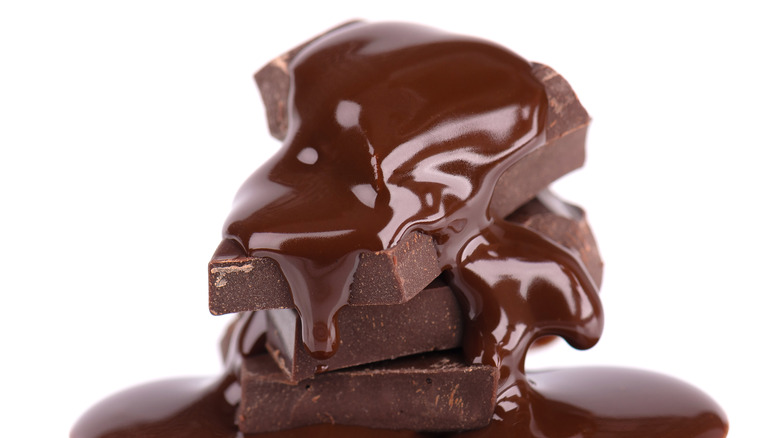Is Melt-Proof Chocolate The Future Of Candy?
Candy has evolved a lot in the past century, starting from basic caramels and chocolates, the introduction of candy bars, and the slow progression to where we are today, with so many candy options that choosing just one treat can seem like an impossibility. Many of our favorite and stand-by candies, like Snickers, Butterfingers, and Reeses, were invented in the 1920s and '30s, according to Bon Appétit. As candy changes and evolves, so do our expectations.
While some candy bars, like Crunch, have maintained the same simple ingredients over time, other brands are doing more and more to stay relevant, like Reeses and Take 5 creating combinations, and companies like Jelly Belly creating their "Bean Boozled" game. People want things that are new and different, like odd flavors and shapes (gummy sushi, anyone?). Chocolate, a candy staple that has remained popular for years, is still evolving. The latest challenge? Companies are attempting to create a version of it that won't melt in the heat. But is it possible?
Companies are working to perfect melt-proof chocolate
One of the first (and easily the most popular) attempts at making chocolate that was resistant to melting in the heat was the M&M, which was invented by Forrest Mars Sr. Mars encountered the idea of chocolate coated in hard sugar shells in the United Kingdom, where soldiers in the "Spanish Civil War were given small chocolate beads surrounded by hard sugar as part of their rations," reports Bon Appétit. In recent years, the race to create melt-proof chocolate that doesn't require the addition of the heat-resistant sugar shells found on M&Ms is heating up (pun intended), with several of the big contenders filing patents for different varieties of heat-proof chocolate.
"Kraft holds a 2011 patent for heat-proofing chocolate by impregnating it with extra water and then putting it through a microwave process," says Smithsonian. The result, Kraft claims, can reach "up to 50 degrees Celsius (about 122 Fahrenheit) without melting." The competition, Nestlé, "filed a 2013 patent [posted at Google Patents] for making chocolate heat-tolerant by adding a dietary fiber from citrus, wheat or even peas to stabilize the chocolate in high temperatures. It even promises its product won't stick to the wrapper." It seems the race is underway and we may see some melt-proof chocolates in the future.

